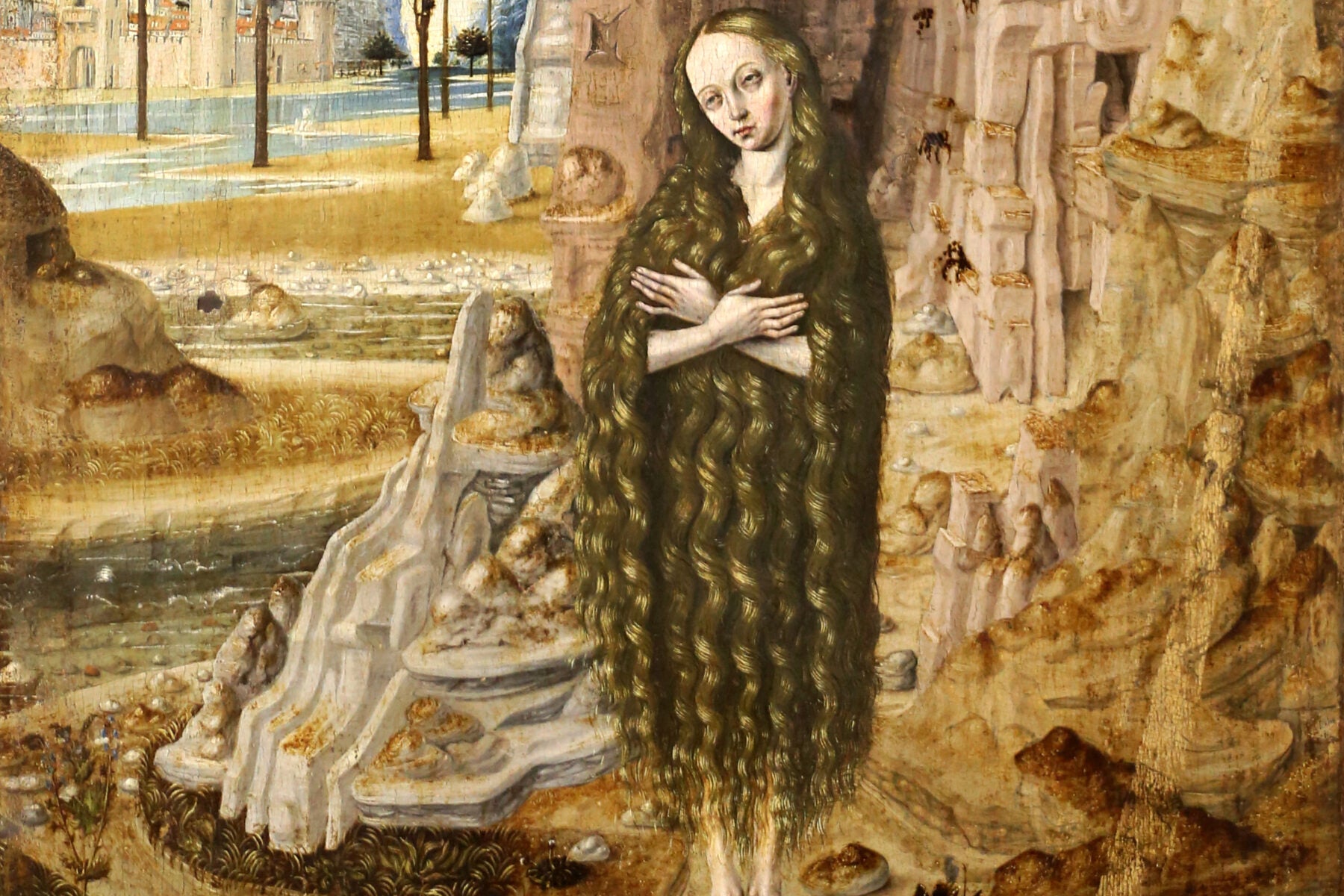A monk wandering in the desert encounters a naked man grazing like a mountain goat. The monk sneaks up and grabs him. The captured man, who “cannot tolerate the smell” of human beings, breaks loose and flees.
“It is for the sake of God that I am pursuing you,” the monk cries out.
“It is for the sake of God that I am running away from you!” the man replies.
He continues to run until the monk finally throws off his clothes and joins him in nudity. Finally, he offers the monk some advice.
“Flee from men and be silent—and you shall be saved.”
This tale comes from The Sayings of the Desert Fathers, a fifth-century compendium of stories from hermits living in the Wadi El Natrun desert. Early Christian lore is full of tales like these, accounts of ascetics who sought salvation through a return to wildness. These bestial saints wandered through the desert, eating only raw food and clothed only in their long, unruly hair; their nails grown into claws, and they shied away from people like wild deer.
The ascetics reportedly lived alongside lions and gazelles, sharing their food and water, forgetting human civilization and all its evils. Consider Raphael’s depiction of Saint Mary of Egypt, a legendary desert hermit: her golden hair is so overgrown that it verges on a pelt. In fact, he seems to have used one of her locks to belt the rest of her hair around her stomach, like a monk’s cowl.
“The Deserts were turned into a City by Monks,” claims the Life of St. Antony, a text attributed to Athanasius of Alexandria. Indeed, by the fourth century, there are accounts of up to 5,000 monks living in the deserts of Egypt, writes musicologist James W. McKinnon. Most of these, however, weren’t wandering the wilds; rather, they lived in small monastic communities, writes archaeologist and historian Darlene L. Brooks Hedstrom, inhabiting simple clay cells spaced far apart, to allow each monk solitude. In the heat of the afternoon, the whole area resounded with the sound of continuously chanted psalms.
As sociologist Judith Adler writes, early Christian writers idealized “ascetic social worlds” and monastic habitats.
“Desert—in the sense of wild and uncultivated rather than specifically sandy or rocky space—became newly valorized as the spiritual/intellectual center of a cosmopolitan monastic movement,” Adler writes (italics in original). Christian ascetic writers
cast wasteland, where there is “neither perpetrator nor victim of injustice, nor complaint of a tax collector” as an earthly “paradise of the fathers,” while market towns and cities that saints were said to “flee” were depicted as a dark, uninhabitable “wilderness of this world.”
In this viewpoint, the right-thinking mind can discover a hidden, inverted world concealed beneath the commonplace—one where civilization is wilderness, and wilderness is the city of Heaven.
Still, this flight from civilization was something of a fantasy. Historian Oliver Freiberger notes that most hermitages were set close enough to towns for easy travel, and that hermits stayed connected with local communities, weaving ropes and baskets for market, giving advice, and receiving small gifts.
And monastic life was certainly not free of human foibles. According to Evagrius of Pontus, monks were particularly vulnerable to the attacks of the “noonday demon,” which
besets the monk at about the fourth hour (10 a.m.) of the morning, encircling his soul until about the eighth hour (2 p.m.). First it makes the Sun seem to slow down or stop moving, so that the day appears to be fifty hours long. Then it makes the monk keep looking out of his window and forces him to go bounding out of his cell to examine the Sun to see how much longer it is to 3 o’clock.
In this context, the wild life of desert wanderers might have seemed like a more liberated alternative to monastic rule. For instance, Freiberger relates the story of a young monk who, fed up with his seniors, simply casts off his cloak and walks into the wilderness.
Others went in the opposite direction, from wilderness to urban life. According to legend, after thirty years grazing in the wild, St. Simeon felt a divine call to go to the city. He arrived at its gates with a dead dog strapped to his belt, and, oddly enough for a saint, he quickly established himself as a public menace, writes religious studies scholar Jesse Perillo, by blowing out the candles right before Mass, pelting locals with walnuts, overturning market stalls, flagrantly violating rules of fasting, walking around naked, relieving himself in public, and (perhaps worst of all) openly associating with actors. It was a sixth-century version of freaking out the normies.
At the same time, he performed miracles—curing diseases, driving out demons, saving a building from an earthquake—all the while using his constant mischief to distract the public from his holiness. In doing so, he established a lineage of “holy fools.” In his footsteps followed figures such as St. Andreas, who staggered about pretending to be drunk, curled up with the stray dogs to sleep at night, and quenched his thirst from puddles in the road.
Weekly Newsletter
As historian David K. Prestel writes, holy fools have often been identified with a verse from Corinthians: “If any man among you seemeth to be wise in this world, let him become a fool, that he may be wise. For the wisdom of this world is foolishness with God.”
As different as the prankish urbanite “fools for Christ” seem from the silent ascetics of the desert, they deal in the same kind of reversal: to the right eyes, wisdom becomes folly and folly wisdom; the desert becomes the city of God, the city a barren wasteland.







